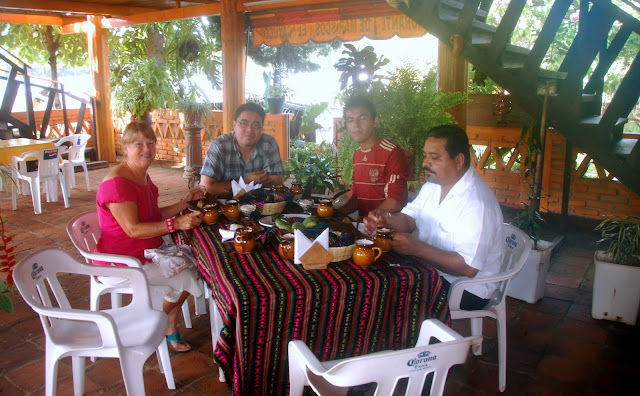Grace will leave Mexico after two and a half years of living the dream. We could not have hoped for a better time or a better place.
While here we have had the pleasure of spending time with Arturo Cordova Cortes, owner of Macaw Tours. Arturo has helped us enormously navigating the bureaucracy of the Instituto Nacional De Migracion to get visa extensions. We held FM3 visas, which run for a year. They are a bit different than the Tourist Visa that everyone gets when taking a vacation here. FM3's are the first step in becoming a permanent resident and/or a citizen. It is not normal to not renew them. And it is abnormal to ask for an extension to a FM3 that will not be renewed. What we supposed would be an easy one stop request has become a nightmare involving multiple levels of local and Mexico City officialdom. We never could have done it on our own. Arturo, however, knows everyone. Including the lady who runs the local INM office. (They knew each other while attending University.) She made it happen. As a favor to Arturo.
Arturo will be picking us up this morning for the final (hopefully) trip to INM. We will have him and his wife Liliana on Grace for dinner this evening as a feeble thank-you. Judy and I have not met Liliana and are eager to do so. She is something of a superstar in Tapachula, having taken her English language students to an international language competition in England where they finished second. Her students are lucky indeed to have her as their teacher.
 |
| Arturo |
We met Arturo while taking his Chocolate and Izapa Ruins tour. We started the day with a delightful breakfast at the chocolate farm. Afterward off we went into a grove of cocoa trees to learn the old Mayan process of making chocolate. If I understand correctly, only the Mayan priests were allowed to make the chocolate, and only Mayan royalty was allowing to eat or drink it. Sounds like they had an ancient controlled substance problem. The cocoa trees grow like weeds here, so I doubt they were very successful keeping the common folk from chocolate abuse. They should have legalized it for everyone, then taxed the heck out of it and used the money to hire Brits to run the Spaniards out of Mexico.
 |
| Breakfast |
 |
| Chocolate "corn" on the tree |
 |
| Inside the corn the chololate nuts are surrounded by a white goo. The nuts can be removed from the corn, dropped into cool water, disolving the goo and creating a tasty agua de cacao. |
 |
| Freed from the corn nuts are roasted 15 to 20 minutes. The goo bakes into a hard crust that is removed from the nut after it cools a bit. |
 |
| The cleaned and cooled nuts are then mashed for as long as it takes to get the dark brown goo that is chocolate. |
 |
| The goo, dropped into a pot of boiling water, stirred vigorously with sugar and cinnamon becomes the royal drink of the ancients. |
After Judy learned how to make my chocolate the old fashioned way, off we went to Izapa, a Mayan ruin that was conveniently located just down the street a ways. It is not just another ruin in a country filled with ruins, it is the ruin of the 1st Mayan town. It is from the Mayan pre-classical era, dating back some 2600 years. Pre-classical ruins are pretty easy to identify, they are built with stones, instead of brick used in the classic era.
The area that is accessible is fairly small, because the folks who own the land most of the ruins are on won't allow access to scientists or tourists. Luckily the owner of these ruins, whose house is in the shadows of the pyramids, allows visitors--for a small fee.
This is the original Mayan ball court. The winner was
given the high honor of having his head chopped off, a practice
that surely hampered the evolution of the game.
Arturo is one of the tourism pioneers in the Tapachula area. Tapachula is a gateway to the Mayan ruins further inland along with several stunning national parks, but tourism has largely passed the city of Tapachula by. It is known primarily as an agricultural area, with massive mango orchards, coffee and cocoa plantations.
It is near warm water beaches, a prerequisite for luring tourists. The pristine beaches, formed partially with black sand of volcanic origin, run for miles and miles. Yet there are no resorts. No hoards of Americans. And no Canadians. A short visit to the beach shows why.
Not the place for a relaxing romp in the surf. Playing in this is a death sport.
I wish Arturo well. I hope he is successful in putting Tapachula on the tourist map. He is one of a new generation of well educated young people creating a new Mexican middle class.










No comments:
Post a Comment